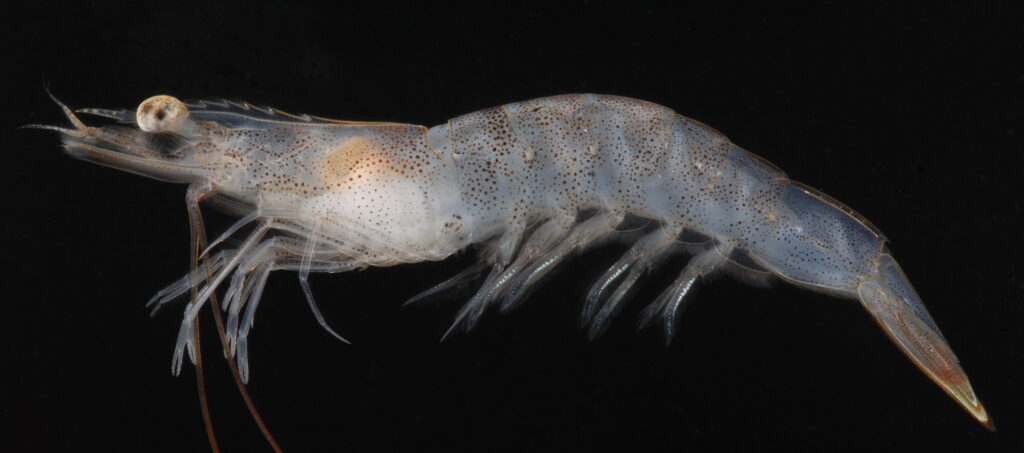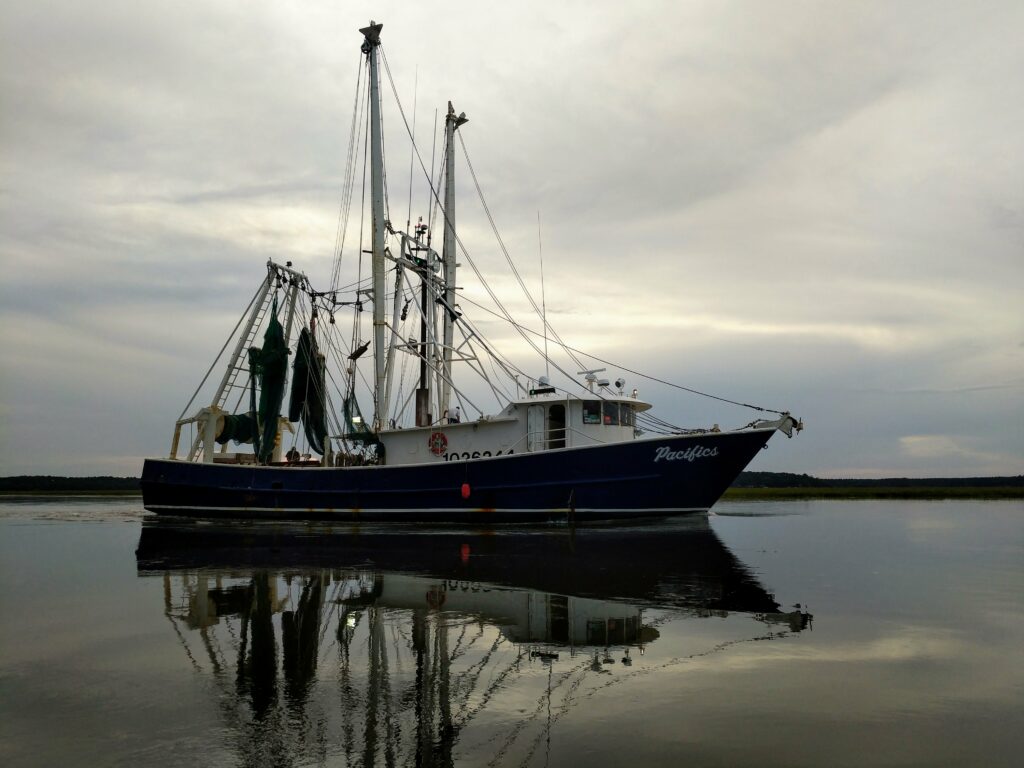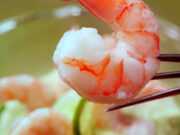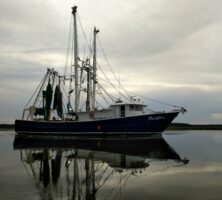Shrimp are a delicacy for seafood lovers—not only humans but also fish and seabirds. Shrimp are Georgia’s most valuable seafood crop, and during most years they account for more than 80 percent of seafood landings value (the total value of caught seafood per year).
In 2020 Georgia ranked seventh in total value of shrimp landings nationwide. Two species of shrimp make up most of the catch: white shrimp (Litopenaeus setiferus) and brown shrimp (Farfantepenaeus aztecus). More than 2 million pounds of heads-on shrimp are harvested annually by a fleet of more than 200 boats, which are based all along the Georgia coast, from St. Marys north to Thunderbolt, with some concentrations at Brunswick, Darien, Valona, Crescent, and Richmond Hill.
Biology of Shrimp
White shrimp, which account for more than two-thirds of Georgia’s harvest, spawn in the Atlantic Ocean from late March until September. At depths of three to ten fathoms, females release 500,000 to 1 million eggs each into the ocean. The eggs are fertilized as they pass the packet of sperm, called the spermatophore, that the male attaches to the female.
Fertilized eggs then drift in ocean currents and usually hatch in twenty to twenty-four hours. The first larval stage, called a nauplius, relies on its yolk sac for food and drifts as part of the microscopic plants (phytoplankton) and animals (zooplankton). The later larval stages begin to feed on phytoplankton, and after fifteen to twenty days, the larval shrimp, which can drift 100 miles from their spawning sites, enter the postlarval stage and are ready to migrate into the sounds and brackish marshes. There, as juveniles, they feed on bottom algae, small animals, and debris. Shrimp remain in the marshes and sounds two to three months and mature before returning to the ocean.
As winter approaches, most white shrimp move out of sounds and travel south. Those lucky enough to avoid the trawls, or nets used for fishing at or near the bottom of the sea, return to become part of the next year’s spawning stock. Some white shrimp remain in the deep holes in coastal streams, and they emerge in the spring and migrate offshore to spawn.

Brown shrimp have a similar life cycle but spawn in the late winter. The postlarvae, ten to thirteen millimeters long, move into estuaries in late March and April. By June the shrimp are adults and begin to move offshore. They are an important harvest from June to August.
The Shrimping Industry
Shrimp are harvested by otter trawls, cast nets, and seines. More than 200 licensed shrimp boats do most of the commercial harvesting in Georgia. The fleet is made up of boats, or trawlers, 20 feet to 100 feet in length, with the bulk of the fleet between 55 feet and 75 feet long. They shrimp from the coast all the way to eight miles offshore. The boats pull as many as four otter trawls, which may have head ropes (the lines at the top of the net’s mouth) as long as fifty-five feet. Wooden doors act as hydrofoils to open the nets under water; the faster the trawls are pulled, the wider they open, but the nets will come off the sea bottom if pulled too fast. The normal trawling speed is two and a half knots, or just under three miles per hour.
Catching animals other than shrimp, called by-catch, is a particular concern. Up to 2.7 pounds of by-catch are caught for every pound of shrimp harvested off the Southeast coast. Sea turtles, which are protected by law, are part of the by-catch. Sea turtles move into shallow nearshore areas, and the female crawls onto the beach to lay her eggs during the summer, at about the same time the shrimp season begins. Turtles swim in front of the trawls until they are exhausted and then are swept into the net. In the past they had no way to escape and drowned if the trawl was pulled for longer than an hour and a half.

The U.S. National Marine Fisheries Service first sought to address the matter in the late 1970s, and by the early 1980s the agency had created the first turtle excluder device (TED). But early models were cumbersome and proved unpopular with shrimpers. In 1986, Darien-based shrimper Sinkey Boone unveiled an improved TED, known as the “Georgia Jumper,” that was more widely adopted. An enhanced device, the “Georgia Jumper Big Boy,” was developed by Boone, with support from the University of Georgia Marine Extension Service and Georgia Sea Grant, and approved for use by federal authorities in 2012.
TEDs provide a hole in the trawl that allows turtles to escape. Each TED has a grill or large mesh net panel that is sewn into the net. This guides turtles and large fish out through the opening. Shrimp are poor swimmers, so they are swept into the back of the net, called the bag, along with the small fish. In addition to TEDs, trawl nets are also outfitted with by-catch reduction devices (BRDs), simple frames that keep small holes open and allow small fish to swim out of the net. Together, BRDs and TEDs have dramatically reduced the amount of by-catch collected by the nation’s shrimpers, while also helping to sustain sea turtle populations.








